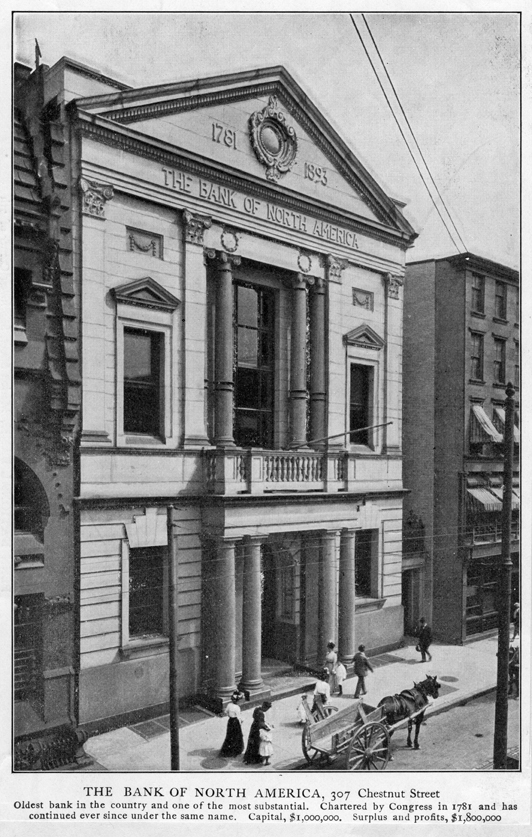On January 7, 1782, the Bank of North America officially opened in Philadelphia, Pennsylvania, becoming the first commercial bank in the United States.
The Revolutionary War had left the American colonies in a state of financial turmoil. The Continental Congress struggled to fund the war effort and faced rampant inflation and a lack of trust in its currency. This situation made the establishment of a stable financial institution essential. On December 31, 1781, the Continental Congress approved the Bank of North America charter, and just a few days later, the bank commenced operations.
Philadelphia, Pennsylvania, was the nation’s financial hub at that time. Although there was initial skepticism, the Bank of North America played a vital role in restoring economic confidence. It provided financing for the government’s debts and contributed to the country’s economic recovery after the war.
The success of the Bank of North America proved the viability of a centralized financial institution in the United States, setting a precedent for future banks such as the First Bank of the United States in 1791. The bank played a crucial role in stabilizing the chaotic post-war economy by issuing reliable paper currency and facilitating trade. The establishment of the bank underscored the necessity for stronger centralized governance, influencing the debates surrounding the U.S. Constitution.
While the Bank of North America no longer exists as it once did, its legacy is a cornerstone in the story of American finance. Its creation addressed immediate wartime needs and laid the groundwork for the modern banking system.

